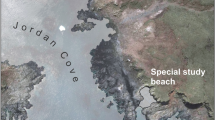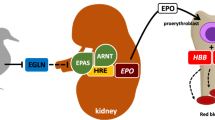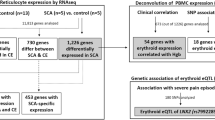Abstract
Crescent-shaped red blood cells, the hallmark of sickle-cell disease, present a striking departure from the biconcave disc shape normally found in mammals. Characterized by increased mechanical fragility, sickled cells promote haemolytic anaemia and vaso-occlusions and contribute directly to disease in humans. Remarkably, a similar sickle-shaped morphology has been observed in erythrocytes from several deer species, without obvious pathological consequences. The genetic basis of erythrocyte sickling in deer, however, remains unknown. Here, we determine the sequences of human β-globin orthologues in 15 deer species and use protein structural modelling to identify a sickling mechanism distinct from the human disease, coordinated by a derived valine (E22V) that is unique to sickling deer. Evidence for long-term maintenance of a trans-species sickling/non-sickling polymorphism suggests that sickling in deer is adaptive. Our results have implications for understanding the ecological regimes and molecular architectures that have promoted convergent evolution of sickling erythrocytes across vertebrates.
This is a preview of subscription content, access via your institution
Access options
Access Nature and 54 other Nature Portfolio journals
Get Nature+, our best-value online-access subscription
$29.99 / 30 days
cancel any time
Subscribe to this journal
Receive 12 digital issues and online access to articles
$119.00 per year
only $9.92 per issue
Buy this article
- Purchase on Springer Link
- Instant access to full article PDF
Prices may be subject to local taxes which are calculated during checkout



Similar content being viewed by others
References
Ingram, V. M. Gene mutations in human haemoglobin: the chemical difference between normal and sickle cell haemoglobin. Nature 180, 326–328 (1957).
Harrington, D. J., Adachi, K. & Royer, W. E. Jr The high resolution crystal structure of deoxyhemoglobin S. J. Mol. Biol. 272, 398–407 (1997).
Wishner, B. C., Ward, K. B., Lattman, E. E. & Love, W. E. Crystal structure of sickle-cell deoxyhemoglobin at 5 Å resolution. J. Mol. Biol. 98, 179–194 (1975).
Sears, D. A. The morbidity of sickle cell trait. Am. J. Med. 64, 1021–1036 (1978).
Platt, O. S. et al. Mortality in sickle cell disease. Life expectancy and risk factors for early death. N. Engl. J. Med. 330, 1639–1644 (1994).
Piel, F. B. et al. Global distribution of the sickle cell gene and geographical confirmation of the malaria hypothesis. Nat. Commun. 1, 104 (2010).
Herrick, J. B. Peculiar elongated and sickle-shaped red blood corpuscles in a case of severe anemia. Arch. Int. Med. 5, 517–521 (1910).
Gulliver, G. Observations on certain peculiarities of form in the blood corpuscles of the mammiferous animals. Lond. Edinb. Dubl. Philos. Mag. 17, 325–331 (1840).
Undritz, E., Betke, K. & Lehmann, H. Sickling phenomenon in deer. Nature 187, 333–334 (1960).
Hawkey, C. M. Comparative Mammalian Haematology (Heinemann Educational Books, 1975).
Butcher, P. D. & Hawkey, C. M. Haemoglobins and erythrocyte sickling in the artiodactyla: a survey. Comp. Biochem. Physiol. A Physiol. 57, 391–398 (1977).
Weber, Y. B. & Giacometti, L. Sickling phenomenon in the erythrocytes of wapiti (Cervus canadensis). J. Mammal. 53, 917–919 (1972).
Simpson, C. F. & Taylor, W. J. Ultrastructure of sickled deer erythrocytes. I. The typical crescent and holly leaf forms. Blood 43, 899–906 (1974).
Schmidt, W. C. et al. The structure of sickling deer type III hemoglobin by molecular replacement. Acta Cryst. B Struct. Sci. Cryst. Eng. Mat. 33, 335–343 (1977).
Pritchard, W. R., Malewitz, T. D. & Kitchen, H. Studies on the mechanism of sickling of deer erythrocytes. Exp. Mol. Pathol. 2, 173–182 (1963).
Kitchen, H., Easley, C. W., Putnam, F. W. & Taylor, W. J. Structural comparison of polymorphic hemoglobins of deer with those of sheep and other species. J. Biol. Chem. 243, 1204–1211 (1968).
Seiffge, D. Haemorheological studies of the sickle cell phenomenon in European red deer (Cervus elaphus). Blut 47, 85–92 (1983).
Kitchen, H., Putnam, F. W. & Taylor, W. J. Hemoglobin polymorphism: its relation to sickling of erythrocytes in white-tailed deer. Science 144, 1237–1239 (1964).
Taylor, W. J. & Easley, C. W. Sickling phenomena of deer. Ann. NY Acad. Sci. 241, 594–604 (1974).
Harris, M. J., Huisman, T. H. J. & Hayes, F. A. Geographic distribution of hemoglobin variants in the white-tailed deer. J. Mammal. 54, 270–274 (1973).
Harris, M. J., Wilson, J. B. & Huisman, T. H. J. Structural studies of hemoglobin α chains from Virginia white-tailed deer. Arch. Biochem. Biophys. 151, 540–548 (1972).
Parshall, C. J., Vainisi, S. J., Goldberg, M. F. & Wolf, E. D. In vivo erythrocyte sickling in the Japanese sika deer (Cervus nippon): methodology. Am. J. Vet. Res 36, 749–752 (1975).
Whitten, C. F. Innocuous nature of the sickling (pseudosickling) phenomenon in deer. Br. J. Haematol. 13, 650–655 (1967).
Shimizu, K. et al. The primary sequence of the beta chain of Hb type III of the Virginia white-tailed deer (Odocoilus virginianus), a comparison with putative sequences of the beta chains from four additional deer hemoglobins, types II, IV, V, and VIII, and relationships between intermolecular contacts, primary sequence and sickling of deer hemoglobins. Hemoglobin 7, 15–45 (1983).
Kitchen, H. & Taylor, W. J. The sickling phenomenon of deer erythrocytes. Adv. Exp. Med. Biol. 28, 325–336 (1972).
Gaudry, M. J., Storz, J. F., Butts, G. T., Campbell, K. L. & Hoffmann, F. G. Repeated evolution of chimeric fusion genes in the β-globin gene family of laurasiatherian mammals. Genome Biol. Evol. 6, 1219–1234 (2014).
Hardison, R. C. Evolution of hemoglobin and its genes. Cold Spring Harb. Perspect. Med. 2, a011627 (2012).
Townes, T. M., Fitzgerald, M. C. & Lingrel, J. B. Triplication of a four-gene set during evolution of the goat beta-globin locus produced three genes now expressed differentially during development. Proc. Natl Acad. Sci. USA 81, 6589–6593 (1984).
Schimenti, J. C. & Duncan, C. H. Structure and organization of the bovine beta-globin genes. Mol. Biol. Evol. 2, 514–525 (1985).
Craig, J. E., Thein, S. L. & Rochette, J. Fetal hemoglobin levels in adults. Blood Rev. 8, 213–224 (1994).
Angeletti, M. et al. Different functional modulation by heterotropic ligands (2,3‐diphosphoglycerate and chlorides) of the two haemoglobins from fallow‐deer (Dama dama). Eur. J. Biochem. 268, 603–611 (2001).
Petruzzelli, R. et al. The primary structure of hemoglobin from reindeer (Rangifer tarandus tarandus) and its functional implications. Biochim. Biophys. Acta Prot. Struct. Mol. Enzymol. 1076, 221–224 (1991).
Adachi, K., Reddy, L. R. & Surrey, S. Role of hydrophobicity of phenylalanine beta 85 and leucine beta 88 in the acceptor pocket for valine beta 6 during hemoglobin S polymerization. J. Biol. Chem. 269, 31563–31566 (1994).
Nagel, R. L. et al. Beta-chain contact sites in the haemoglobin S polymer. Nature 283, 832–834 (1980).
Adachi, K., Konitzer, P. & Surrey, S. Role of gamma 87 Gln in the inhibition of hemoglobin S polymerization by hemoglobin F. J. Biol. Chem. 269, 9562–9567 (1994).
Witkowska, H. E. et al. Sickle cell disease in a patient with sickle cell trait and compound heterozygosity for hemoglobin S and hemoglobin Quebec–Chori. N. Engl. J. Med. 325, 1150–1154 (1991).
Watson-Williams, E. J., Beale, D., Irvine, D. & Lehmann, H. A new haemoglobin, D Ibadan (beta-87 threonine → lysine), producing no sickle-cell haemoglobin D disease with haemoglobin S. Nature 205, 1273–1276 (1965).
Amma, E. L., Sproul, G. D., Wong, S. & Huisman, T. H. J. Mechanism of sickling in deer erythrocytes. Ann. NY Acad. Sci. 241, 605–613 (1974).
Girling, R. L., Schmidt, W. C. Jr, Houston, T. E., Amma, E. L. & Huisman, T. H. J. Molecular packing and intermolecular contacts of sickling deer type III hemoglobin. J. Mol. Biol. 131, 417–433 (1979).
Fernández, M. H. & Vrba, E. S. A complete estimate of the phylogenetic relationships in Ruminantia: a dated species-level supertree of the extant ruminants. Biol. Rev. 80, 269–302 (2005).
Taylor, W. J. & Simpson, C. F. Ultrastructure of sickled deer erythrocytes. II. The matchstick cell. Blood 43, 907–914 (1974).
Butcher, P. D. & Hawkey, C. M. in The Comparative Pathology of Zoo Animals (eds Montali, R. J. & Migaki, G.) 633–641 (Smithsonian Institute, Washington, 1980).
Hedges, S. B., Marin, J., Suleski, M., Paymer, M. & Kumar, S. Tree of life reveals clock-like speciation and diversification. Mol. Biol. Evol. 32, 835–845 (2015).
Wiuf, C., Zhao, K., Innan, H. & Nordborg, M. The probability and chromosomal extent of trans-specific polymorphism. Genetics 168, 2363–2372 (2004).
Gao, Z., Przeworski, M. & Sella, G. Footprints of ancient‐balanced polymorphisms in genetic variation data from closely related species. Evolution 69, 431–446 (2015).
Baker, K. H. et al. Strong population structure in a species manipulated by humans since the Neolithic: the European fallow deer (Dama dama dama). Heredity 119, 16–26 (2017).
Ryman, N., Baccus, R., Reuterwall, C. & Smith, M. H. Effective population size, generation interval, and potential loss of genetic variability in game species under different hunting regimes. Oikos 36, 257–266 (1981).
Halligan, D. L., Oliver, F., Eyre-Walker, A., Harr, B. & Keightley, P. D. Evidence for pervasive adaptive protein evolution in wild mice. PLoS Genet. 6, e1000825 (2010).
Shapiro, J. A. et al. Adaptive genic evolution in the Drosophila genomes. Proc. Natl Acad. Sci. USA 104, 2271–2276 (2007).
Koldkjær, P., McDonald, M. D., Prior, I. & Berenbrink, M. Pronounced in vivo hemoglobin polymerization in red blood cells of Gulf toadfish: a general role for hemoglobin aggregation in vertebrate hemoparasite defense? Am. J. Physiol. Regul. Integr. Comp. Physiol. 305, R1190–R1199 (2013).
Hawkey, C. M. & Jordan, P. Sickle-cell erythrocytes in the mongoose Herpestes sanguineus. Trans. R. Soc. Trop. Med. Hyg. 61, 180–181 (1967).
Butcher, P. D. & Hawkey, C. M. The nature of erythrocyte sickling in sheep. Comp. Biochem. Physiol. A Physiol. 64, 411–418 (1979).
Evans, E. T. R. Sickling phenomenon in sheep. Nature 217, 74–75 (1968).
Tucker, E. M. Genetic variation in the sheep red blood cell. Biol. Rev. Camb. Philos. Soc. 46, 341–386 (1971).
Kijas, J. W. et al. Genome-wide analysis of the world’s sheep breeds reveals high levels of historic mixture and strong recent selection. PLoS Biol. 10, e1001258 (2012).
Garcia-Seisdedos, H., Empereur-Mot, C., Elad, N. & Levy, E. D. Proteins evolve on the edge of supramolecular self-assembly. Nature 548, 244–247 (2017).
Perry, B. D., Nichols, D. K. & Cullom, E. S. Babesia odocoilei Emerson and Wright, 1970 in white-tailed deer, Odocoileus virginianus (Zimmermann), in Virginia. J. Wildl. Dis. 21, 149–152 (1985).
Garnham, P. C. & Kuttler, K. L. A malaria parasite of the white-tailed deer (Odocoileus virginianus) and its relation with known species of Plasmodium in other ungulates. Proc. R. Soc. Lond. B Biol. Sci. 206, 395–402 (1980).
Martinsen, E. S. et al. Hidden in plain sight: cryptic and endemic malaria parasites in North American white-tailed deer (Odocoileus virginianus). Sci. Adv. 2, e1501486 (2016).
Naidu, A., Fitak, R. R., Munguia Vega, A. & Culver, M. Novel primers for complete mitochondrial cytochrome b gene sequencing in mammals. Mol. Ecol. Resour. 12, 191–196 (2012).
Arnold, C., Matthews, L. J. & Nunn, C. L. The 10kTrees website: a new online resource for primate phylogeny. Evol. Anthropol. 19, 114–118 (2010).
Paradis, E., Claude, J. & Strimmer, K. APE: analyses of phylogenetics and evolution in R language. Bioinformatics 20, 289–290 (2004).
Bolger, A. M., Lohse, M. & Usadel, B. Trimmomatic: a flexible trimmer for Illumina sequence data. Bioinformatics 30, 2114–2120 (2014).
Langmead, B. & Salzberg, S. L. Fast gapped-read alignment with Bowtie 2. Nat. Methods 9, 357–359 (2012).
Allen, J. M., Huang, D. I., Cronk, Q. C. & Johnson, K. P. aTRAM—automated target restricted assembly method: a fast method for assembling loci across divergent taxa from next-generation sequencing data. BMC Bioinformatics 16, 98 (2015).
Bao, W., Kojima, K. K. & Kohany, O. Repbase Update, a database of repetitive elements in eukaryotic genomes. Mob. DNA 6, 11 (2015).
Zerbino, D. R. & Birney, E. Velvet: algorithms for de novo short read assembly using de Bruijn graphs. Genome Res. 18, 821–829 (2008).
Treangen, T. J., Sommer, D. D., Angly, F. E., Koren, S. & Pop, M. Next generation sequence assembly with AMOS. Curr. Protoc. Bioinformatics 11, 11.8 (2011).
Haas, B. J. et al. De novo transcript sequence reconstruction from RNA-Seq using the Trinity platform for reference generation and analysis. Nat. Protoc. 8, 1494–1512 (2013).
Lee, S. et al. EMSAR: estimation of transcript abundance from RNA-Seq data by mappability-based segmentation and reclustering. BMC Bioinformatics 16, 278 (2015).
Kearse, M. et al. Geneious Basic: an integrated and extendable desktop software platform for the organization and analysis of sequence data. Bioinformatics 28, 1647–1649 (2012).
Eswar, N. et al. Comparative protein structure modeling using MODELLER. Curr. Protoc. Protein Sci. 2, 2.9 (2007).
Baker, N. A., Sept, D., Joseph, S., Holst, M. J. & McCammon, J. A. Electrostatics of nanosystems: application to microtubules and the ribosome. Proc. Natl Acad. Sci. USA 98, 10037–10041 (2001).
Humphrey, W., Dalke, A. & Schulten, K. VMD: visual molecular dynamics. J. Mol. Graph. 14, 33–38 (1996).
Dominguez, C., Boelens, R. & Bonvin, A. M. HADDOCK: a protein−protein docking approach based on biochemical or biophysical information. J. Am. Chem. Soc. 125, 1731–1737 (2003).
Guerois, R., Nielsen, J. E. & Serrano, L. Predicting changes in the stability of proteins and protein complexes: a study of more than 1000 mutations. J. Mol. Biol. 320, 369–387 (2002).
Meredith, R. W. et al. Impacts of the Cretaceous terrestrial revolution and KPg extinction on mammal diversification. Science 334, 521–524 (2011).
Ludt, C. J., Schroeder, W., Rottmann, O. & Kuehn, R. Mitochondrial DNA phylogeography of red deer (Cervus elaphus). Mol. Phylogenet. Evol. 31, 1064–1083 (2004).
Shimodaira, H. An approximately unbiased test of phylogenetic tree selection. Syst. Biol. 51, 492–508 (2002).
Shimodaira, H. & Hasegawa, M. CONSEL: for assessing the confidence of phylogenetic tree selection. Bioinformatics 17, 1246–1247 (2001).
Martin, D. P., Murrell, B., Golden, M., Khoosal, A. & Muhire, B. RDP4: detection and analysis of recombination patterns in virus genomes. Virus Evol. 1, vev003 (2015).
Papadakis, M. N. & Patrinos, G. P. Contribution of gene conversion in the evolution of the human beta-like globin gene family. Hum. Genet. 104, 117–125 (1999).
Jeffreys, A. J. & May, C. A. Intense and highly localized gene conversion activity in human meiotic crossover hot spots. Nat. Genet. 36, 151–156 (2004).
Bosch, E., Hurles, M. E., Navarro, A. & Jobling, M. A. Dynamics of a human interparalog gene conversion hotspot. Genome Res. 14, 835–844 (2004).
Acknowledgements
We thank the Zoological Society of London Whipsnade Zoo (F. Molenaar), Bristol Zoological Society (S. Dow and K. Wyatt), the Royal Zoological Society of Scotland Highland Wildlife Park (J. Morse), the British Deer Society, the Penn State Deer Research Center (D. Wagner) and the Northeast Wildlife DNA Laboratory (N. Chinnici) for samples, the Medical Research Council London Institute of Medical Sciences Genomics Facility for DNA and RNA sequencing, B. N. Sacks, J. Mizzi and T. Brown for access to tule elk sequencing data, P. D. Butcher for discussions, and P. Sarkies, A. Brown and B. Lehner for comments on the manuscript. This work was supported by an Imperial College Interdisciplinary Cross-Campus Studentship to A.E., a Medical Research Council Career Development Award (MR/M02122X/1) to J.A.M., a Leverhulme Trust Fellowship to V.S., and Medical Research Council core funding and an Imperial College Junior Research Fellowship to T.W.
Author information
Authors and Affiliations
Contributions
A.E. performed the laboratory experiments and evolutionary analyses and contributed to the experimental design, data analysis and interpretation. L.T.B. and J.A.M. designed and performed the structural modelling and contributed to the data analysis and interpretation. V.S. contributed tissue samples. T.W. conceived the study, contributed to the experimental design, data analysis and interpretation, and wrote the manuscript with input from all authors.
Corresponding author
Ethics declarations
Competing interests
The authors declare no competing financial interests.
Additional information
Publisher’s note: Springer Nature remains neutral with regard to jurisdictional claims in published maps and institutional affiliations.
Supplementary information
Supplementary Information
Supplementary Figures 1–11, Supplementary Table 1, Supplementary Discussion, Supplementary References.
Supplementary Table 2
Confirmation of species identities by mitochondrial CytB sequencing.
Supplementary Data 1
Alignment of cervid HBB A and HBB F gene sequences (coding exons and internal introns) determined in this study.
Rights and permissions
About this article
Cite this article
Esin, A., Bergendahl, L.T., Savolainen, V. et al. The genetic basis and evolution of red blood cell sickling in deer. Nat Ecol Evol 2, 367–376 (2018). https://doi.org/10.1038/s41559-017-0420-3
Received:
Accepted:
Published:
Issue Date:
DOI: https://doi.org/10.1038/s41559-017-0420-3
This article is cited by
-
Variation in the prion protein gene (PRNP) sequence of wild deer in Great Britain and mainland Europe
Veterinary Research (2019)



